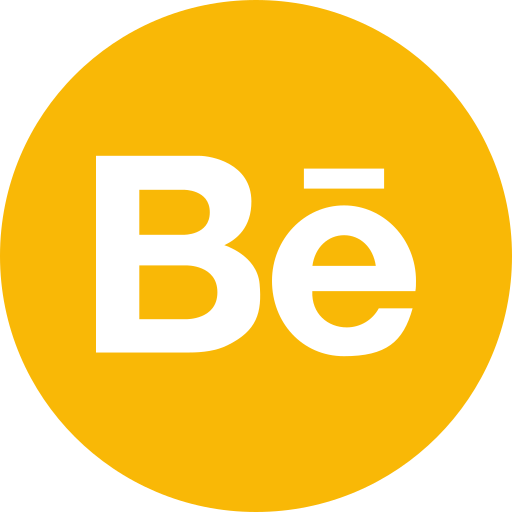
Solid Drawing in Animation: Bringing Life to 2D Characters
Quick Takeaways:
- Solid drawing is crucial for creating believable 3D illusions in 2D animation
- Mastering form, weight, and volume is key to effective solid drawing
- This principle applies to both traditional and digital animation techniques
What is Solid Drawing in Animation?
Solid drawing is the 8th principle of animation; it’s giving depth and dimension to your characters. It gives them “weight” and “volume”, which will make these 2D drawings and pixels feel real and tangible, though imaginary.
Why is that so important? Without good drawing skills, your characters would be lifeless and flat, not living and breathing, but more like cardboard cut-outs. After all, no one wants to watch a cartoon full of paper dolls!
Why is that so important? Without good drawing skills, your characters would be lifeless and flat, not living and breathing, but more like cardboard cut-outs. After all, no one wants to watch a cartoon full of paper dolls!
The Roots of Solids Drawing
Along with 11 other principles, this one originated in the hands of Disney legends Ollie Johnston and Frank Thomas back in their 1981 book entitled “The Illusion of Life: Disney Animation.”
These gurus of animation defined solid drawing as:
“Considering forms in three-dimensional space, or assigning volume and weight to them.” That means giving your 2D drawings that 3D look and feel.
These gurus of animation defined solid drawing as:
“Considering forms in three-dimensional space, or assigning volume and weight to them.” That means giving your 2D drawings that 3D look and feel.
Why Solid Drawing is Important in Animation
Imagine watching a cartoon where the characters look different from all angles, or their limbs are floating around disconnected. Well, not the most attractive sight, is it? That’s where solid drawing saves the day! Here’s why it’s so important:
- Creates Believability: Solid drawing gives characters the feel of “reality” inside an animated world.
- Adds Depth: It gives volume and form to what otherwise might be two-dimensional flat drawings.
- Improves Consistency: When drawing, the shapes of characters and proportions can be easily shown from all angles.
- Enhances Appeal: Properly drawn characters have more appeal and are fun to watch.
Tips to Master Solid Drawing
Here are some solid get-it tips to up your solid drawing skills:
- Study Anatomy: By understanding how bodies work in real life, you will also understand how to draw them convincingly in an animation.
- Practice Perspective: You need to learn to draw your characters from all sides so that you can maintain consistency.
- Use Reference: You shouldn’t feel ashamed to look at real objects and people.
- Avoid “Twinning”: Your character’s left and right sides should not be the mirror image of the other one.
- Think in 3D: Your character must be thought of as a sculptural form, not a flat drawing.
- Master the Basics: Learn to be comfortable with simple shapes like spheres, cylinders, and cubes because they are the basis for good drawing.
Solid Drawing in Traditional vs. Digital Animation
By this point, you’re probably thinking, “But wait, isn’t solid drawing just for old-school pencil and paper animation?” Not in the slightest! This principle is just as important in the digital era. Let’s break it down:
Traditional Animation:
- Artists focus on creating volume through shading and linework.
- Each frame has to be drawn by hand; hence, an artist needs to apply solid drawing in every frame.
- Emphasizes the ability of an artist to perceive 3D forms on paper.
Digital Animation:
- 3D software helps create volume, but the understanding of form is still essential.
- Weight distribution and balance need to be considered when rigging characters by an artist.
- Knowledge of solid drawing principles helps create more convincing digital characters.

The Beauty of Solid Drawing: Examples in Action
Let’s take a closer look at how solid drawing brings the characters to life:
Classic Example: Mickey Mouse
If you watch old Mickey Mouse cartoons, it’s nice to appreciate how Disney animators created the volume and weight of Mickey by using solid drawings. The character of Mickey is basically created with circular shapes and equal proportions, so he can almost seem three-dimensional in lowly black-and-white animations.
Modern Example: Pixar Characters
While Pixar does 3D animations, their character designs still rely on solid drawing principles. Just think about the squash and stretch of the characters in “The Incredibles” or the weight and volume of the characters in “Up”-that is one solid drawing in action!
Solid Drawing: Not Just for Characters
Solid drawing isn’t only about animated characters. It is also super important for the following reasons:
- Props and Objects: Giving that animated teapot or magic sword some real weight
- Environments: Creating believable backgrounds and settings
- Effects Animation: Giving substance to elements like water, fire, or smoke
Common Pitfalls in Solid Drawing (And How to Avoid Them)
Even pros have to sometimes struggle with solid drawing. Here are some common mistakes to watch out for:
- Flat Characters: Keep your characters from looking like cut-outs by the inclusion of shadows and occlusion of forms, or both.
- Inconsistent Proportions: If you have a model sheet, it helps preserve continuity of size and shape in your character.
- Stiff Poses: Remember that even static poses should show weight and balance in your character.
- Forgetting Perspective - One has to remember always how the forms are going to change by looking from angle to angle.
- Over-complication: Sometimes the simpler forms will explain more about the weight and volume of things.
Solid Drawing in the Age of CGI
You might think, “Is solid drawing still relevant in the age of computer-generated imagery?” It is more crucial than ever. Why?
- Bedrock of 3D: An understanding of solid drawing informs a 3D artist in the construction of digital models that can be read as more convincing.
- Character Design: Even in CGI, characters start out as 2D concept art and should therefore involve solid drawing skills.
- Visual Development: Strong drawing is the basis for visually appealing and believable animation.
Putting It All Together: The Art of Solid Drawing
At the very core of solid drawing are believability and appeal-character relatability, if you will. It’s that magic sauce that turns lines into living, breathing characters that dance into our hearts and minds.
So, whether you are a budding animator or just an animation enthusiast, remember this: behind every great cartoon character is a whole lot of solid drawing!
So, whether you are a budding animator or just an animation enthusiast, remember this: behind every great cartoon character is a whole lot of solid drawing!
FAQ: Mastering Solid Drawing in Animation
- What’s the difference between solid drawing and regular drawing? In solid drawing, the ability to create a three-dimensional form in a two-dimensional drawing is realized through the emphasis on volume, weight, and balance. In a regular drawing, these elements might not be taken into consideration as much.
- Can I learn solid drawing if I’m not a good artist? While it certainly helps to have artistic talent, that doesn’t matter in the slightest because anyone can build solid drawing skills with practice. Just start with simple shapes and build from there into more detailed forms.
- How does solid drawing integrate with other principles of animation? It works hand-in-glove with such principles as squash and stretch, for the character can be deformed for effect but their volume is retained due to solid drawing.
- Is solid drawing relevant in 3D animation? Absolutely! Solid drawing helps the 3D animator understand posing and animating the character more convincingly, even with digital tools.
- What are some exercises to improve one’s solid drawing? Drawing simple objects from multiple angles, figure sketching using basic shapes, or gesture drawing to capture form in a quick manner.
- How does solid drawing contribute to or affect character appeal? Well-executed solid drawing makes your characters alive, and the audience relate better to them, hence more appealing.
- Can solid drawing principles be applied to a non-character animation? Guaranteed! Drawing in a solid manner is very much needed in order to animate props, environments, or even abstract conceptions believably.
Let's Discuss !!














